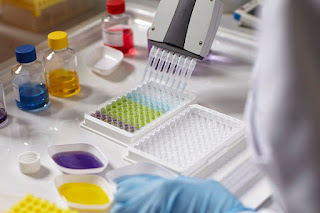The global Legionella
Testing Market is expected to grow at a considerable rate over the
forecast period owing to the advancements and automation in the
immunodiagnostic market such as the introduction of advanced ELISA antibodies
for the prevention of legionnaires diseases in the market. The rapidly rising
awareness about legionella based diseases and the increase in demand for
advanced immunodiagnostic techniques is a direct consequence of rapidly
increasing incidences of mild flu and pneumonia like diseases through
legionella bacteria. Since legionella bacteria requires the presence of iron
and cysteine to grow, it is traditionally detected by culture on buffered
charcoal yeast extract. This process takes 4 to 5 days for detecting the
legionella bacteria. The advanced immunological techniques such as polymerase
chain reaction and rapid immunological assays are efficient to detect the
legionella bacteria in few minutes. These techniques are commonly used to
establish the presence of species of Legionella bacteria in the sample. Some of
the other drivers for the growth of the global legionella testing market
include the entry of new players, new emerging economies such as China and
India and increase in the funding for healthcare facilities by the government in
many regions. There are about 40 different species of legionella bacteria out
of which 18 species are infectious. Among all these species, the legionella
pneumophilla bacterium can cause most of the diseases. Many hospitals have
started various tests such as legionella urinary antigen test for the initial
detection of legionella based diseases. This is the factor expected to further
fuel the legionella testing market over the forecast period.
The
legionella testing market has been divided on the basis of antibiotics used for
the treatment of legionella infections into rifampin, azithromycin, ketolides,
quinolones and macrolides. It is expected that Azithromycin drug will grow at
the fastest rate throughout the forecast period owing to its efficiency to treat
legionella based diseases. Azithromycin drug is mainly used for treating this
infection in children and adults. The increasing incidences of legionella based
diseases in children and adults is also a factor driving the Azithromycin drug
segment in the market. Apart, certain flouroquinolones such as moxifloxacin and
levofloxacin are also considered as the most efficient drugs for legionella
based diseases. There are several diagnostic tests which are available
commercially in the market for initial detection of Legionella bacteria in the
body such as sputum or lung tissue test, urine antigen test, chest X-ray and
blood test. There are various end users of legionella testing drugs which
include hospitals, commercial or private labs, physician offices and public
health labs.
Major
regions estimated for the legionella testing market are North America, Europe,
Asia Pacific and RoW. As of 2013, North America dominated the market
attributing the largest share in terms of revenue. This large share can be
accounted for by the increasing number of patients suffering from legionella
based diseases, the presence of large number of market players and government
initiatives such as various public health labs across the region. Owing to the
new emerging economies such as Germany and U.K. and rising awareness about
legionella based diseases in the Europe region, it is expected that this region
will show lucrative growth in the global legionella testing market over the
forecast period.
The key
participants in the legionella testing market include Roche Diagnostics,
Beckman Coulter, Bio Rad, Novartis Diagnostics, Life Technology, Becton
Dickinson, Abott laboratories, Eiken Chemical, ID Biomedical, Thermo Fischer,
Takara Bio, Kreatech, Gen Probe, Enzo Biochem and SeraCare. The market leaders
in the global legionella testing market are involved in continuous efforts for
the development of innovative methodologies of testing which would increase the
efficiency and accuracy of test results while providing the smooth processing of
larger samples simultaneously. This companies are also entering into strategic
collaborations and expansions to extend their global patient base.
Browse Detailed TOC @ https://www.hexaresearch.com/research-report/legionella-testing-industry
About Us:
Hexa Research is a market research and
consulting organization, offering industry reports, custom research and
consulting services to a host of key industries across the globe. We offer
comprehensive business intelligence in the form of industry reports which help
our clients obtain clarity about their business environment and enable them to
undertake strategic growth initiatives.
Contact Us:
Ryan Shaw
Hexa Research
Felton Office Plaza
6265 Highway 9
Felton, California 95018
United States
Phone: +1-800-489-3075
Email: sales@hexaresearch.com
Website - https://www.hexaresearch.com




